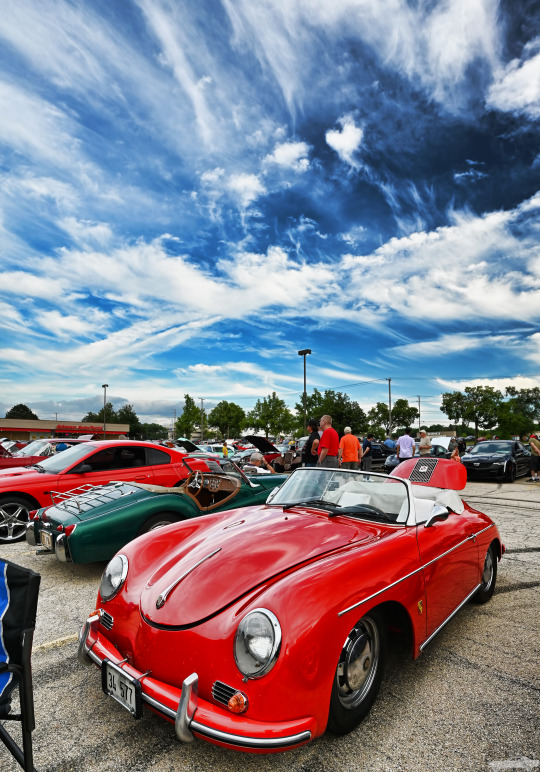#Porsche 956
Photo
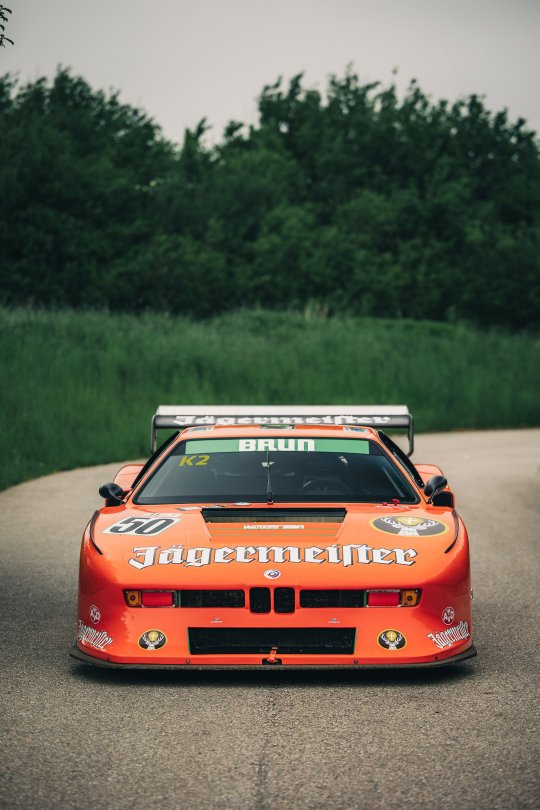

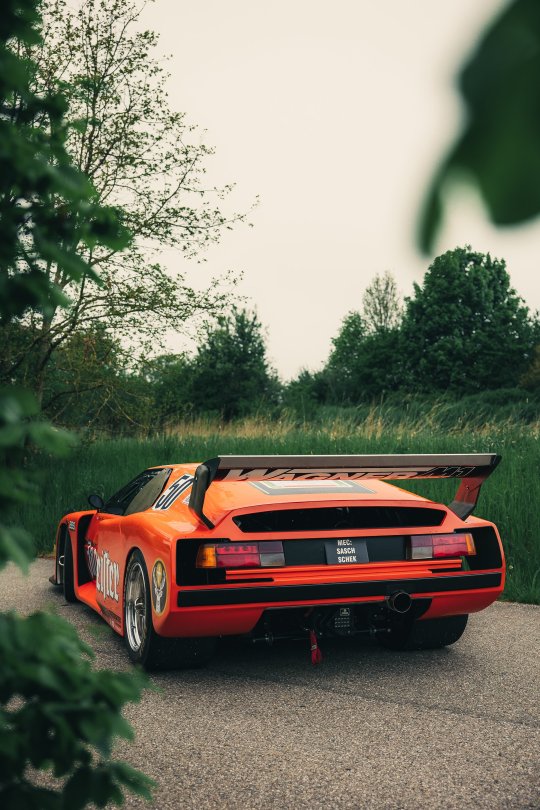
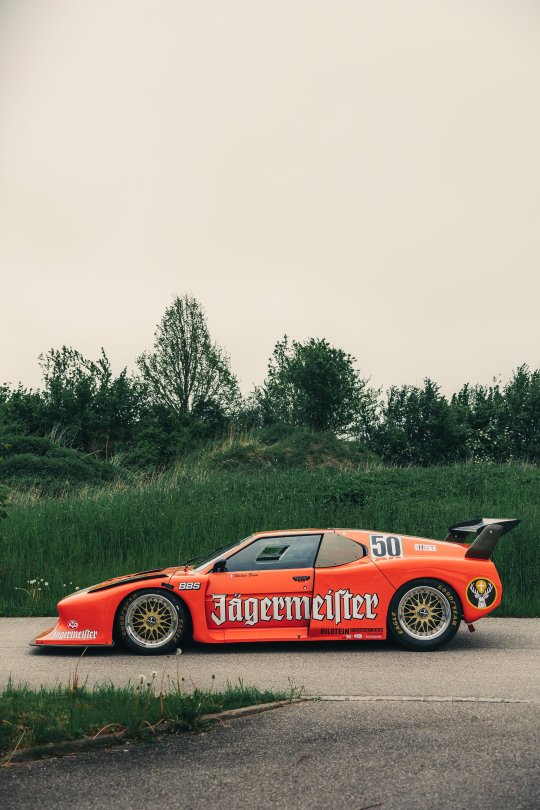






BMW M1 Turbo (the extraordinary case of the BMW M1 with 1000 hp)
Ignore the livery. Or don’t ignore it. Like with every other Jägermeister racing car, it might be hard to actually walk past this orange beast without giving the standout paint job at least one glance. It was designed to attract attention, just how Günter Mast — the man that gave his OK to race cars with the famous stag on the bonnet — intended. The truth of the matter is, however, that this particular car’s convoluted history is as complicated as the story of the BMW M1 itself. Therefore this car is not what it seems to be, as the orange Jägermeister livery stems from the imagination of the man that rebuilt the car, the legendary M1 whisperer Fritz Wagner. And if you ask anyone at Jägermeister headquarters about the car, they will potentially reply with a polite letter from their legal department.
To paraphrase Samuel Beckett: there’s nothing funnier than tragedy. And so, the story of the BMW M1 could be perceived as one of the automotive world’s funniest. The car was originally designed with the ambition to create the greatest, mid-engined racing car of all time. One that would beat Porsche’s dominating 935 in the all-important Group 5. A masterpiece made of speed and German reliability which, in reality, became a car that had to be reverse engineered to be sold for the road. All because of changes in racing rules and homologation, which stipulated how many cars had to be produced before a particular model was allowed to hit the track. The production number of 400 cars — which seems so minuscule by today’s standards — turned out to be the first problem on a long list of unfolding disasters.
In essence, the life of this beautiful, light, well-made machine that had been designed by Giorgetto Giugiaro, who reworked Paul Bracq’s original prototype, was plagued by bad luck and bad decisions. The fact that Lamborghini — who were supposed to produce it at their factory — went bust because of copyright fraud and embezzlement of funds didn’t help. However, it was the rushed solution to disperse production all over Europe that was the final nail in the coffin. Marchese built the car's tube frame, TIR molded the fiberglass, Italdesign mated the two and installed the interior, then the M1 was shipped from Italy to Stuttgart, where Baur would install the BMW hardware, after which in Munich BMW Motorsports would do the final touches and quality control. It made the M1 almost a quarter more expensive than any equivalent Ferrari or Lambo sold at the time. Case closed.
British generals in the second world war would often joke that Germans were not very good when it came to Plan B. This might be true. In the end, even if BMW’s head of Motorsport Jochen Neerpasch, the brilliant man that he is, thought of a way to market the M1 with the Procar series, in which F1 drivers like Niki Lauda, Clay Regazzoni, and Nelson Piquet would race the cars against privateers, as a prelude to the weekend's Formula 1 race, too few examples were made for the car to ever officially leave Group 4 as was originally intended. Later on, those teams who managed to finally race in Group 5, years after BMW abandoned the programme in order to enter to F1, found the M1 simply uncompetitive. Even the twin-turbocharged models built by Schnitzer, which developed 800 hp and more from their straight six engines, were plagued by problems.
his finally brings us to this particular, rather unusual example. It was allegedly built for the famous Walter Brun racing team, who later on won the Group C World Championship with a Jägermeister-liveried Porsche 956. Brun’s friendship with Paul Rosche, the man who turbocharged the BMW 2002, gave rise to the idea of installing the M88 turbo engine originally planned for the March Group-5 car into a modified M1 Procar chassis wrapped into Group 5 bodywork. However, the car was never raced. Why? Even at BMW no one knows.
Particularly good news considering that back in the day, when this 1090 kg machine was put on a dyno, it put out 1000 hp and 930 NM of Torque. A reading obtained just before the machine broke while the car apparently still wanted to keep going. Now in the hands of a new owner who intends to race it regularly, it will have plenty of opportunity to shine. And so a new chapter unfolds…
#BMW M1 Turbo#Jägermeister#porsche#Ferrari#lamborghini#Group 4#Niki Lauda#Clay Regazzoni#Nelson Piquet#Group 5#Walter Brun#Porsche 956#BMW 2002
205 notes
·
View notes
Text

110 notes
·
View notes
Text

Group C competition, 1985 WEC Japan. More than 80,000 spectators packed into Fuji Speedway in heavy rain. The works Porsche 956 on the first row of the grid withdrew early, and Kazuyoshi Hoshino, driving the March B5G Nissan (No. 28) that qualified third, won the race, which was shortened to two hours due to bad weather. Although bad weather was on their side, it was the first time for a Nissan car and the first Japanese to win a world championship race.
2 notes
·
View notes
Text

Porsche 956, Enero 2023
#snapshot#miniature photography#miniature#diecast#die cast#toys#toy photography#scale car#toy car#model car#porsche 956#porsche#le mans#skate#skateboarding#skatepark#cadiz#spain#iphonephotography#iphone
21 notes
·
View notes
Photo
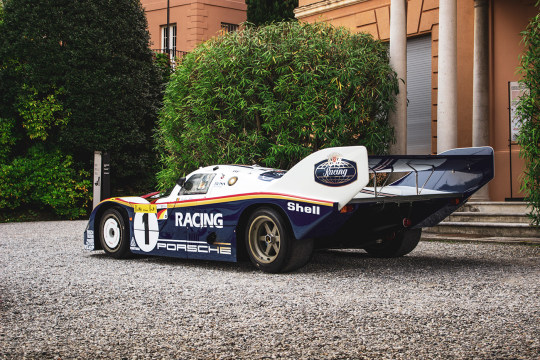
Porsche 956
Image by Andrea Fracchia || IG
63 notes
·
View notes
Photo

956 NEW MAN (con Ayrton Senna al volante).
New Man era empresa de ropa Sport Wear Chic de una familia de Cholet. Marcó su tiempo con el patrocinio al equipo Joest Racing de resistencia ganando las 24 Horas de Le Mans de 1984 con Pescarolo y Klaus Ludwig. El de la imagen es el 956 que corrió los 1000km de Nurburgring ese mismo año con Ayrton Senna al volante.
Acuarela sobre papel 300grs.A3. jrG Motor
B-1107
2023
3 notes
·
View notes
Text

Porsche 956 Group C race car
74 notes
·
View notes
Text
GTi Engineering Canon Porsche 956 of
Lammers & Palmer finished 3rd, Sandown
Park, Melbourne, Dec. 1984
3 notes
·
View notes
Text


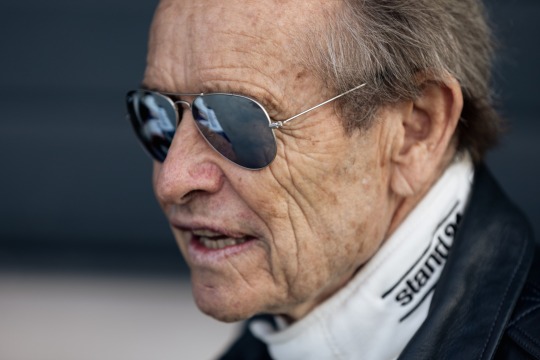
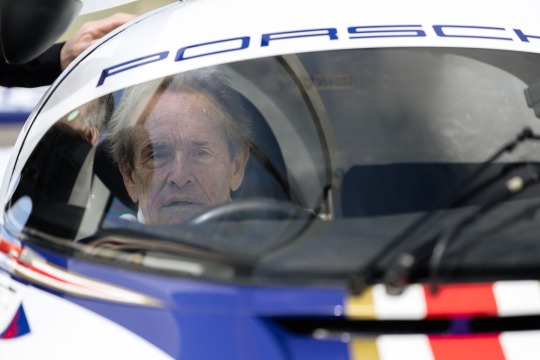
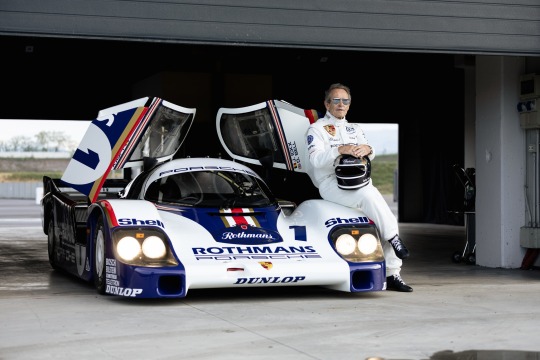





Jacky Ickx début 2023 et la Porsche 956 avec laquelle il a gagné sa sixième victoire au 24 heures du Mans. - source Porsche Museum.
53 notes
·
View notes
Text
1984 #Nürburgring 1000Km 🏁
Stefan Bellof 🇩🇪 / Derek Bell 🏴
Porsche 956
#Endurance_racing

35 notes
·
View notes
Text

20th century
NISSAN
MOTORSPORTS 1958-2000
'80~
WEC championship,
And to participate in Le Mans
Group C flourishes.
In the early 1980s, the FIA (International Automobile Federation)
The rules and classification of competition vehicles were changed.
Group C vehicles that are racing sports cars
is not classified by displacement as in the past,
Only the total amount of fuel used is specified (good fuel consumption is essential);
What type of engine can you use if you clear this?
It is a challenge for manufacturers as they are willing to participate.
It has become a very important category. The same regulations apply from the following year.
The world championship match “WEC Japan” by Fujis
Since it started at Pedeway, Nissan also started
Developed a carbon engine and mounted it on a foreign chassis.
Start participating. As an extension of that, to the Le Mans 24 Hours.
Participated in the race, the first challenge was in 1986, and the best in 1990.
Although it became a fast machine and won pole position, unfortunately, the battle ends without victory. In the 80s-90s
Also in WSPC (World Sports Prototype Championship) he participated full-time and finished 3rd in the series in 1990.
At that time in the United States, a category similar to Group C, IMSA-GTP, which is a popular cars actively participate in the race, Nissan GTP ZX-T
He was the champion from 1988 to 1999.
Nissan has been in the WRC (World Rally Championship) for 7-8 years.
Although he was able to take second place in the series for three consecutive years, the new vehicle In the era of Group B (starting in 1983) and Group A (starting in 1988) after the regulations came into effect, they often played supporting roles. However, there are still marathon raids such as the Paris-Dakar Rally, and popularity in the United States.
At stadiums, off-road races, etc. that collect
Often achieved good results.
In Japan, in 1985, Group A vehicles began
The Japan Touring Car Championship has begun, and Skyline RS Turbo and GTS-R were part of the winning front. And boasts the strongest Group A machine
R32 Skyline GT-R appears.
On the other hand, the Saurus Cup, March one-make race, or an amateur with many Silvias and Pulsars.
Races for beginners were also widely held nationwide.
Also, the first F1GP race in Japan in 10 years will be held in 8 years.
It was held at Suzuka Circuit and has been held every year since then.
With the introduction of F1, there was a sudden F1 boom in Japan.
/The motorsports boom was ignited.
PIC CAPTIONS
Local Kenyan expert Shehkar Mehta and his beloved PA10 Violet achieved the feat of winning the Safari Rally four years in a row from 1979 to 1982. Among the many international rallies, the Safari Rally is far more demanding than the events held in Western Europe, and it became an ideal venue for Japanese cars to demonstrate their excellence.
_____________________________________________
The "Silhouette Formula" car, which was born in Germany in the late 1970s, is a heavily modified racing car that retains only a slight silhouette of the production car. It is equipped with a trendy turbocharger and captivates fans with its overwhelming straight-line speed. In Japan in the early 1980s, Skylines and Silvias spewed flames and raced around Fuji Speedway and other places. Its power is 570bhp
_____________________________________________
Group C competition, 1985 WEC Japan. More than 80,000 spectators packed into Fuji Speedway in heavy rain. The works Porsche 956 on the first row of the grid withdrew early, and Kazuyoshi Hoshino, driving the March B5G Nissan (No. 28) that qualified third, won the race, which was shortened to two hours due to bad weather. Although bad weather was on their side, it was the first time for a Nissan car and the first Japanese to win a world championship race.
5 notes
·
View notes
Photo

Porsche 956
Image by Rich Pearce || IG
22 notes
·
View notes
Text
Creative Challenge Day 7: lost and alone
On day 2, I mentioned a past that the one who lived it can't remember. Let's get a look at part of it, shall we...
It was meant to be a vacation she and her caretaker would take together. Instead, the Spacebridge malfunctioned just as she rushed through it in excitement. How quickly that feeling faded, replaced by fear of where she was, and of being alone. Then suddenly, she saw something- it looked like a bot, with the same alt mode as her caretaker, no less! Believing him to be a friend, she followed him, and he led her to two other bots. One, the femme of the group, had a Porsche 956 as their alt mode(though the young bot didn't know that. To them, one car alt mode was the same as any other). The other took the form of a motorcycle, and he was clearly the leader of the group. As they took notice of her, the motorcycle bot spoke up. "You're lucky it wasn't a Guardian following you, Cop-tur. Now then, why don't you come with us, little one?"
2 notes
·
View notes
